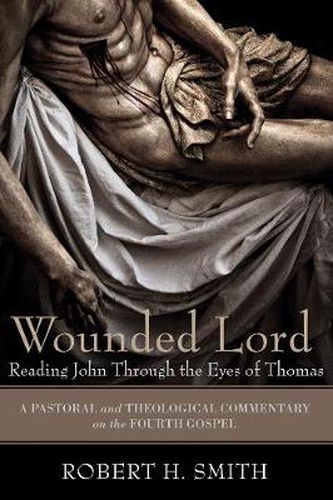Readings Newsletter
Become a Readings Member to make your shopping experience even easier.
Sign in or sign up for free!
You’re not far away from qualifying for FREE standard shipping within Australia
You’ve qualified for FREE standard shipping within Australia
The cart is loading…






This title is printed to order. This book may have been self-published. If so, we cannot guarantee the quality of the content. In the main most books will have gone through the editing process however some may not. We therefore suggest that you be aware of this before ordering this book. If in doubt check either the author or publisher’s details as we are unable to accept any returns unless they are faulty. Please contact us if you have any questions.
John’s gospel does not record Thomas’s doubt, as later generations of Christians have branded the story. Rather, John presents Thomas’s faith. In this work, Robert H. Smith approaches Thomas as one who believes in the reality of incarnation: God has a body. Too often, Smith argues, Christians read John’s gospel for its lyrical discourses. The resulting portrait of Jesus is a cross-less Christ, a portrait that contributes powerfully to Christian triumphalism. In contrast, Smith finds that the evangelist always has the cross in view. Smith reads John backwards, through the eyes of Thomas. In so doing, he demonstrates the centrality of a wounded Lord in the theology of the gospel. But this book does not end with hermeneutics. Smith advances his discussion into the life of discipleship. Anyone dwelling in Christ’s body will be similarly marked. What does it mean to live in the world as the marked body of Christ? Everyone who poses the question will want to read this book. Martha E. Stortz Professor of Historical Theology and Ethics Pacific Lutheran Theological Seminary/The Graduate Theological Union Berkeley, California
$9.00 standard shipping within Australia
FREE standard shipping within Australia for orders over $100.00
Express & International shipping calculated at checkout
This title is printed to order. This book may have been self-published. If so, we cannot guarantee the quality of the content. In the main most books will have gone through the editing process however some may not. We therefore suggest that you be aware of this before ordering this book. If in doubt check either the author or publisher’s details as we are unable to accept any returns unless they are faulty. Please contact us if you have any questions.
John’s gospel does not record Thomas’s doubt, as later generations of Christians have branded the story. Rather, John presents Thomas’s faith. In this work, Robert H. Smith approaches Thomas as one who believes in the reality of incarnation: God has a body. Too often, Smith argues, Christians read John’s gospel for its lyrical discourses. The resulting portrait of Jesus is a cross-less Christ, a portrait that contributes powerfully to Christian triumphalism. In contrast, Smith finds that the evangelist always has the cross in view. Smith reads John backwards, through the eyes of Thomas. In so doing, he demonstrates the centrality of a wounded Lord in the theology of the gospel. But this book does not end with hermeneutics. Smith advances his discussion into the life of discipleship. Anyone dwelling in Christ’s body will be similarly marked. What does it mean to live in the world as the marked body of Christ? Everyone who poses the question will want to read this book. Martha E. Stortz Professor of Historical Theology and Ethics Pacific Lutheran Theological Seminary/The Graduate Theological Union Berkeley, California